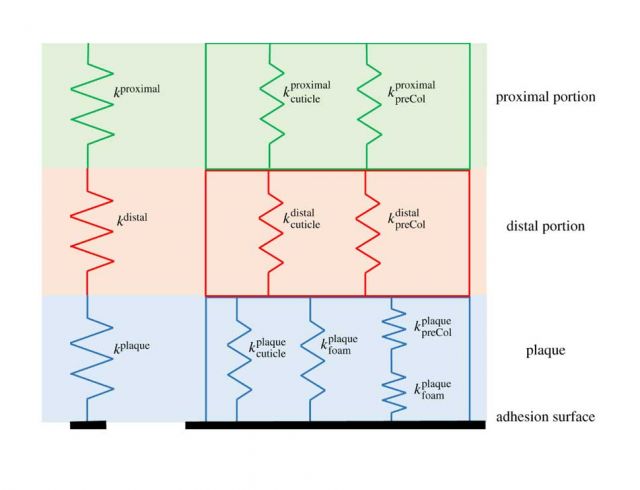
Force distribution and multiscale mechanics in the mussel byssus
Noy Cohen, J. Herbert Waite, Robert M. McMeeking, and Megan T. Valentine. Philosophical Transactions of the Royal Society B 374 (1784) 20190202 (2019).
Abstract
The byssi of sessile mussels have the extraordinary ability to adhere to various surfaces and withstand static and dynamic loadings arising from hostile environmental conditions. Many investigations aimed at understanding the unique properties of byssal thread–plaque structures have been conducted and have inspired the enhancement of fibre coatings and adhesives. However, a systems-level analysis of the mechanical performance of the composite materials is lacking. In this work, we discuss the anatomy of the byssus and the function of each of the three components (the proximal thread portion, the distal thread portion and the adhesive plaque) of its structures. We introduce a basic nonlinear system of springs that describes the contribution of each component to the overall mechanical response and use this model to approximate the elastic modulus of the distal thread portion as well as the plaque, the response of which cannot be isolated through experiment alone. We conclude with a discussion of unresolved questions, highlighting areas of opportunity where additional experimental and theoretical work is needed.